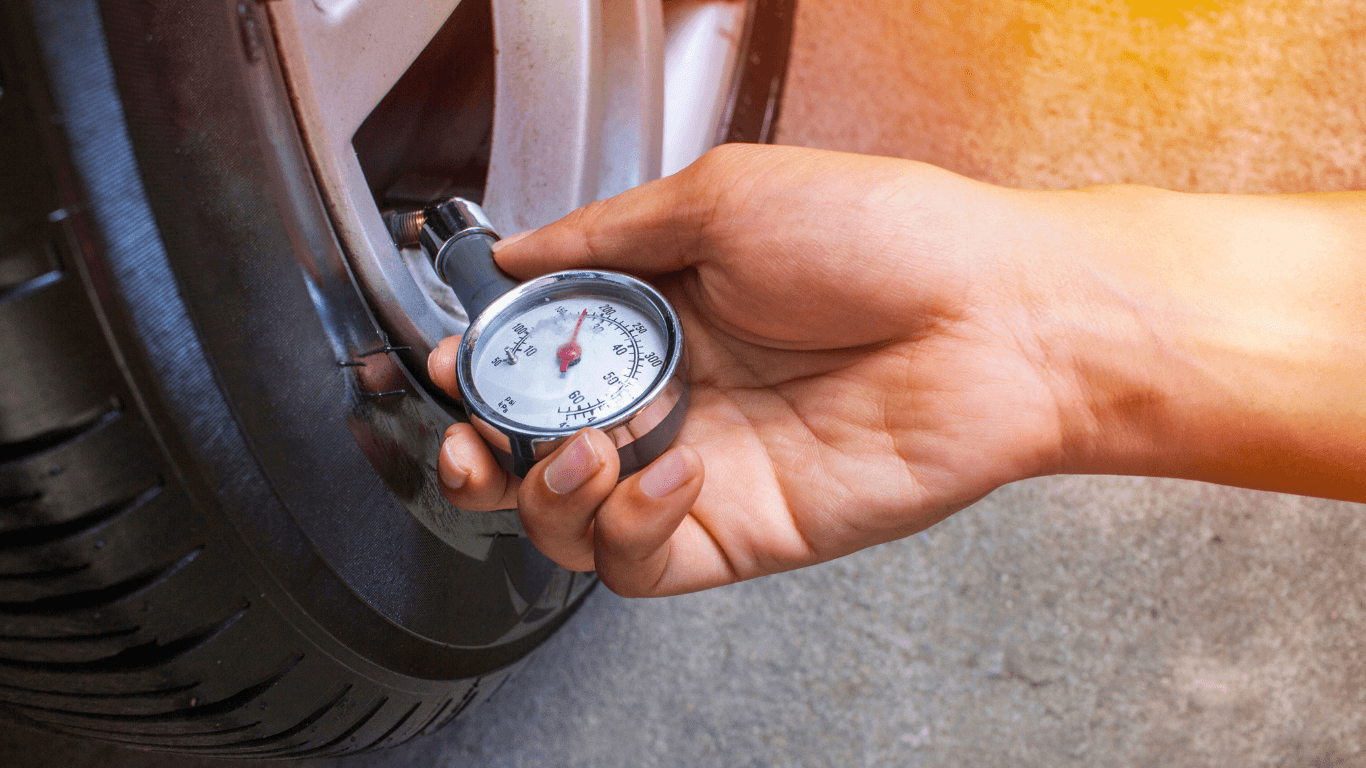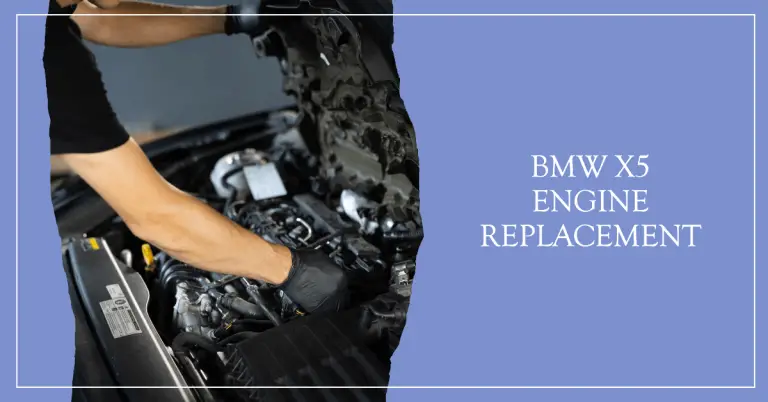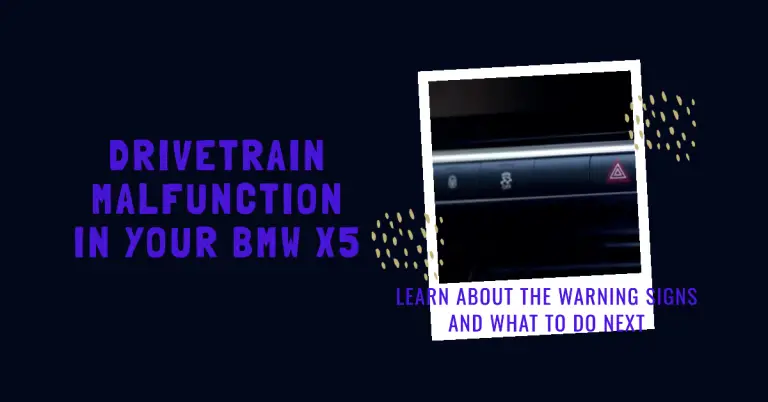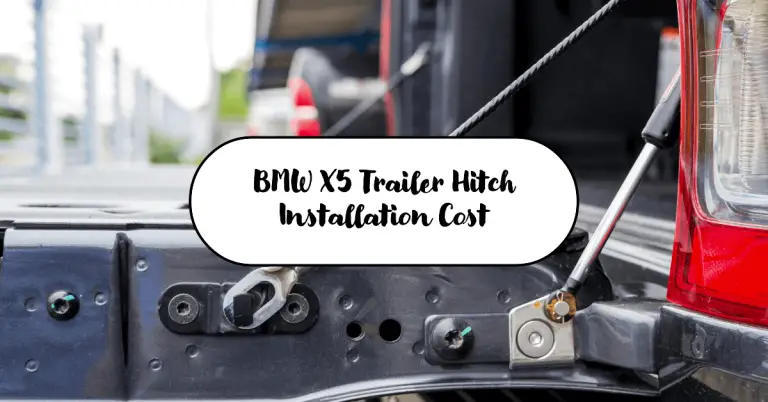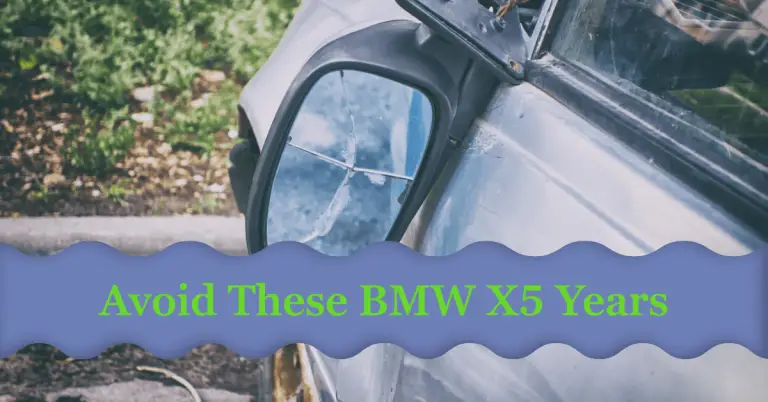BMW X5 Tire Pressure: How to Check and Maintain It
Having proper tire pressure is absolutely critical for your BMW X5’s performance, handling, safety, and longevity. But what exactly is the recommended tire pressure for your X5? And how can you accurately check and maintain it?
This comprehensive guide will teach you everything you need to know about proper tire pressure in your BMW X5. You’ll learn how to easily locate and check your tire pressure using gauges and BMW’s Tire Pressure Monitoring System. You’ll also get tips for maintaining optimal pressure, including adding air to underinflated tires, fixing TPMS errors, and knowing when to replace damaged tires.
Monitoring and adjusting your BMW X5’s tire pressure regularly is one of the most important maintenance tasks you can do. Proper inflation promotes even tread wear, improves fuel efficiency, enhances traction and braking, and prevents blowouts and flats. By keeping your X5’s tires inflated to the recommended PSI, you’ll enjoy better handling, safety, and performance.
Why Proper Tire Pressure is Critical in a BMW X5?
Maintaining correct tire pressure is important in any vehicle, but especially crucial in a performance SUV like the BMW X5. As a larger, heavier vehicle with a powerful engine, the X5’s tires must be properly inflated to operate safely and efficiently.
Here are some of the major benefits of proper tire pressure in your X5:
1. Enhanced Handling and Braking
When tires are underinflated, their grip and traction are greatly reduced. This makes it harder for your X5’s tires to accelerate, brake, and corner effectively. Proper inflation allows the tires to better grip the road, providing much sharper handling and shorter braking distances.
2. Improved Fuel Efficiency
Underinflated tires create more rolling resistance with the road, forcing your X5’s engine to work harder and use more fuel. Keeping your tires properly inflated reduces drag and rolling resistance for better miles per gallon.
3. Reduced Uneven Tire Wear
Low tire pressure causes certain parts of the tire tread to wear faster than others. This leads to uneven tire wear, reducing the usable life of your tires. Proper inflation promotes even treadwear so your tires last longer.
4. Prevented Blowouts and Flat Tires
The most dangerous consequence of underinflation is blowouts and flat tires. Too little pressure causes excessive heat buildup in the tires from flexing. This heat can literally cause tires to explode at high speeds. Maintaining the recommended PSI prevents this.
So proper tire pressure clearly plays a major role in your BMW X5’s performance, economy, safety, and the longevity of its tires. Next let’s cover how to easily check your X5’s tire pressure.
Checking Your BMW X5’s Tire Pressure
To maintain proper inflation, you first need to know how to check your X5’s current tire pressures. There are several ways to do this: by locating the recommended PSI, using tire pressure gauges, and utilizing the Tire Pressure Monitoring System.
Locating the Recommended Tire Pressure for Your X5
The first step is to find the recommended inflation pressures for your specific BMW X5. These recommended PSI levels can be found in several places:
- On the door jamb – Check the driver’s side door jamb for a sticker listing the proper front and rear tire pressures for your X5 when fully loaded.
- Inside the glove box – Many X5’s have a tire pressure placard inside the glove box or onboard literature.
- Fuel door – Some models have a sticker located inside the fuel door with the recommended pressures.
- Owner’s manual – The owner’s manual will list the standard inflation pressures for your X5’s tires.
The recommended pressures for the BMW X5 are generally around 36 PSI in the front tires and 42 PSI in the rear tires. But confirm the exact PSI for your model and trim level before inflating.
If you aren’t sure, a good rule of thumb is to inflate to the maximum pressure listed for your tires’ size on the sidewall. Just don’t exceed the max pressure.
Using a Tire Pressure Gauge
Once you know the recommended pressures, you need a tire pressure gauge to measure your X5’s actual inflation levels.
There are two main options:
Analog Gauges
- Inexpensive and easy to find
- Uses a needle and dial display
- Prone to small inaccuracies
Digital Gauges
- More precise electronic readings
- Cost more but worth the investment
- Display exact PSI on an LCD screen
To use any tire pressure gauge properly:
- Remove the valve stem cap and press the gauge straight onto the valve stem.
- Press firmly to get a seal and take a pressure reading.
- For accuracy, take measurements when the tires are cold before driving.
- Compare the measured PSI to the recommended inflation pressures.
- If needed, inflate any underpressured tires to the proper PSI (see maintaining pressure).
Checking with a high quality digital gauge monthly provides the most accurate inflation readings.
Using the Tire Pressure Monitoring System
The other way to monitor your BMW X5’s tire pressure is by using its built-in Tire Pressure Monitoring System (TPMS).
All modern BMW X5’s come equipped with TPMS as a safety feature. It uses sensors mounted inside each wheel to continuously measure tire pressure.
The X5’s TPMS computer then reads these sensor signals and warns you if any of your tires drop 25% or more below the target inflation pressure. It does this by lighting up the low tire pressure warning light on your dashboard.
The main benefits of TPMS are:
- Monitors pressure 24/7, even while driving
- Alerts you right away if a tire is significantly underinflated
- Saves you from having to manually check pressures as often
However, TPMS is not foolproof. Its warnings are only triggered by fairly significant pressure loss. Minor underinflation of a few PSI may not set off the TPMS light.
For this reason, you should still manually check pressures monthly with a tire gauge. Think of your X5’s TPMS system as an extra safety net, not a replacement for using a pressure gauge.
When to Check Your BMW X5’s Tire Pressure
To ensure optimal inflation, you should check your tire pressures:
- At least once a month
- Before any long trip
- After significantly changing outside temperature
Monthly checks will catch any gradual air loss and ensure you don’t unknowingly drive on underinflated tires before TPMS detects it.
Pre-trip checks are wise before any long journey where a blowout would be especially hazardous.
You should also re-check pressure when seasons change. Tires typically lose 1 PSI for every 10° F temperature drop. So if you last checked pressures in summer, they may be underinflated in winter.
Consistently monitoring your BMW X5’s tire inflation will keep you on top of pressure changes and maintenance needs. Next let’s go over tips for maintaining proper pressure.
Maintaining Proper Tire Pressure in Your BMW X5
Once you’ve checked your tire pressures, it’s important to know how to maintain optimal inflation. This involves understanding manufacturer recommendations, properly adding air as needed, fixing TPMS errors, and replacing damaged tires.
Understanding BMW X5 Recommended Tire Pressures
As discussed earlier, recommended pressures for your X5’s tires can be found on placards in the door jamb, glove box, fuel filler door, and owner’s manual.
For newer X5 models, BMW specifies:
- 36 PSI for front tires – The front tires require lower pressure since they carry less weight.
- 42 PSI for rear tires – The rear tires need higher pressure to support more weight.
These pressures assume normal cargo and passenger load. If hauling heavier payloads, you may need to inflate a few extra PSI as specified by BMW guidelines.
The reasoning behind the rear tires needing more pressure is due to weight distribution. In the X5, weight distribution is closer to 50/50 front-to-rear than most other SUVs. But the vehicle’s engine still places more weight over the rear tires. Thus, they require higher pressures.
Following BMW’s recommended pressures specific to your X5 model and load will provide ideal inflation for proper wear, fuel economy, handling, and safety.
Adding Air to Underinflated Tires
When checking inflation, if any tires are lower than the recommended PSI, air will need to be added. Here are some tips for properly inflating underpressured tires:
- Use a high quality digital tire pressure gauge for accuracy.
- Only add air when tires are cold before driving for correct readings.
- Locate an air compressor – gas stations or auto repair shops will have coin operated ones.
- Press the gauge tightly on the valve stem and inflate to the target PSI.
- Go slowly and frequently check the pressure to avoid overinflation.
- Make sure TPMS sensors get reset after inflating so they provide accurate readings.
- Re-check pressure with the gauge once finished to confirm proper inflation.
- Don’t exceed the maximum pressure listed on the tire sidewall.
Taking the time to precisely inflate underinflated tires to the recommended pressures will keep your X5’s handling, braking, and treadwear optimal.
Fixing BMW X5 TPMS Errors
As discussed earlier, the Tire Pressure Monitoring System in your X5 alerts you if inflation drops 25% below target pressures. However, it can sometimes show false warnings.
Common causes for erroneous TPMS warning lights include:
- Incorrectly set or calibrated TPMS sensors after checking and adjusting pressures
- Interference from devices with similar radio frequencies
- Malfunctioning or failed TPMS sensor battery
To reset the TPMS system in your X5 if it shows inaccurate warnings:
- Refer to owner’s manual for sensor reset instructions specific to your model year.
- Typically involves pressing a button to initiate sensor calibration.
- May require specialized BMW scan tool to reset and reprogram.
For recurring sensor issues, the faulty wheel sensor will likely need to be replaced by a BMW mechanic to permanently fix false TPMS errors.
Identifying When to Replace Tires Due to Pressure Issues
If an X5’s tires remain significantly underinflated for an extended period, permanent internal tire damage can occur. Signs this damage requires new tires include:
- Visible tire cord or belt material exposed through cracked sidewalls
- Blisters or bulges on the tire sidewalls
- Carcass damage like ruined plies that cannot be fully repaired
Severe underinflation also leads to uneven tire wear patterns like feathering and cupping in the tread. If wear exceeds the treadwear indicators molded into the grooves, new tires are needed.
Only minor repairable damage like small punctures or slow leaks may allow tires to be patched instead of requiring full replacement. When in doubt, have a professional inspect underinflated tires for safety.
Expect to pay $150-300 per tire for most OEM all-season tires or $250-600 for high performance summer tires. Plus labor costs for mounting, balancing, and disposal fees. Using a reputable brand is highly recommended when replacing BMW X5 tires.
Maintaining proper inflation through monthly pressure checks, prompt air additions when needed, and TPMS reset procedures will maximize the lifespan of your tires and avoid unnecessary replacements.
Keeping Proper Tire Pressure Ensures Optimal X5 Performance
Whether you’ve owned your BMW X5 for years or are inspecting pressures on a brand new 2023 model, consistent tire inflation maintenance is absolutely vital.
By locating your recommended pressures, routinely checking them with gauges and TPMS, properly inflating as needed, and promptly replacing any damaged tires, you’ll enjoy premium handling, braking, safety, and performance from your X5.
To recap, be sure to:
- Check recommended PSI – Confirm the specific front and rear tire pressure recommendations from BMW for your X5 model and load.
- Use accurate gauges – Invest in a high quality digital tire pressure gauge for precision.
- Monitor TPMS – Utilize the Tire Pressure Monitoring System as an extra safeguard.
- Inflate when needed – Carefully add air anytime tires are underinflated per the guidelines.
- Reset TPMS – Recalibrate the system if it shows false warnings.
- Replace damaged tires ASAP – Don’t delay replacing tires severely damaged from underinflation.
By mastering proper tire inflation, you’ll keep your BMW X5’s tires in their best possible condition. This pays dividends in terms of driving enjoyment, safety, efficiency, and vehicle longevity.

